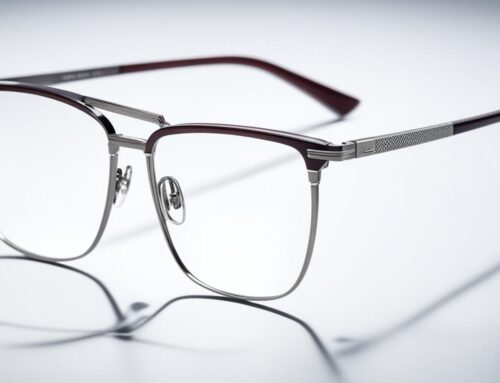As we embrace the digital age, the use of computer screens in our everyday life is skyrocketing. Workplaces, educational institutions, and even social interactions have switched to digital mediums, leading to increased screen time for most individuals. The rise of remote work culture and digital learning platforms has further propelled this trend.
Even our recreational activities, such as gaming or watching television shows, revolve around screens. This constant exposure to digital screens has significant implications for our eye health, leading to conditions like Computer Vision Syndrome. Opticians play a critical role in mitigating these effects, providing suitable solutions to reduce eye strain and maintain optimal eye health.
Symptoms of this condition include blurred vision, dry eyes, headaches, and eye fatigue. The eyes are not naturally suited for the high levels of screen use prevalent in our digital society, and this strain can lead to more severe, long-term issues such as myopia (nearsightedness).
Furthermore, the blue light emitted by digital screens can disrupt our sleep patterns, which can indirectly lead to additional health issues. The potential harm to our eyes due to prolonged screen exposure is, therefore, a significant concern that requires appropriate interventions.
Understanding the Impact of Computer Screens
Computer screens primarily affect our eyes through the emission of blue light and the strain caused by focusing on pixels. Blue light, which is a part of the visible light spectrum, reaches deeper into the eye and can potentially damage the retina. It’s also known to suppress the secretion of melatonin, a hormone that influences circadian rhythms and hence, can disrupt sleep patterns.
Symptoms of Computer Vision Syndrome or Digital Eye Strain
Computer Vision Syndrome (CVS) or Digital Eye Strain typically manifests in a variety of symptoms, each indicating the stress imposed on our eyes by excessive screen time. These symptoms often include blurred or double vision, dry, red, or irritated eyes, and headaches.
In addition, one may experience neck and shoulder pain due to poor posture while using digital devices. Other indicators can be an increased sensitivity to light, difficulty in refocusing the eyes, or problems with glare. Some individuals may also report feeling as though they cannot keep their eyes open—this is known as ocular fatigue. It’s important to note that these symptoms can vary from person to person and may intensify if unaddressed over an extended period of screen usage.
The Long-Term Impact on Our Eye Health
In the long term, continuous exposure to computer screens without proper eye care measures can lead to persistent eye disorders. Among these, progressive myopia or nearsightedness is a common consequence. The blue light exposure can accelerate macular degeneration, a condition that can lead to vision loss over time.
Chronic eye strain can cause astigmatism and other refractive errors, further deteriorating our visual acuity. Additionally, persistent dry eyes can give rise to more serious conditions like chronic dry eye syndrome, which may require intensive treatment. It’s crucial to understand that these long-term effects are not just temporary discomforts; they can significantly impact our quality of life and productivity.
Hence, proactive measures, regular eye check-ups, and consultations with opticians become essential for maintaining eye health in our increasingly digital lifestyle.
Role of Opticians in Addressing Screen-Related Eye Issues
Diagnosing Screen-Related Eye Problems: The Crucial Role of Opticians
Opticians play a pivotal role in diagnosing screen-related eye problems effectively. They employ a range of tests and assessments to identify symptoms and underlying conditions caused by excessive screen use. These diagnostic tools can include vision tests, eye focussing and movement tests, and an examination of the eye itself using specialized equipment.
Opticians are adept at spotting the early signs of conditions like Computer Vision Syndrome, dry eye syndrome, and damage from blue light exposure. By diagnosing these issues early, they can help mitigate the impacts and set individuals on a path to better eye health, despite living in a digital age.
Evaluating Eye Health: The Multifaceted Approach of Opticians
Opticians employ a suite of techniques for a comprehensive evaluation of eye health. One such method is a refraction assessment to measure the eye’s ability to focus light, which helps in detecting refractive errors like myopia, hyperopia, and astigmatism. Furthermore, an optician may conduct a visual acuity test using a Snellen chart to determine the sharpness of your vision at varying distances.
They also use ophthalmoscopes, retinoscopes, and slit lamp microscopes to examine the eye’s interior, providing insights into the health of the retina, lens, and cornea. Tonometry, another essential test, measures the pressure inside the eye to detect any signs of glaucoma. An optician might also use a color vision test to identify color blindness and other color vision deficiencies.
To specifically address issues associated with prolonged screen usage, opticians may recommend a Computer Vision Syndrome (CVS) test. This test evaluates the patient’s visual ability and comfort when viewing digital screens at a typical working distance. Through these diverse evaluation methods, opticians can provide a well-rounded assessment of eye health, thereby guiding appropriate interventions and treatments.
Solutions and Prevention Strategies
Tips on Reducing Screen Time
A. Create a Balanced Schedule
Creating a balanced schedule is one of the most effective ways to manage screen time. This involves planning your day and incorporating designated screen breaks. Take regular breaks every 20 minutes, following the 20-20-20 rule – look at something 20 feet away for 20 seconds every 20 minutes of screen time. This can help rest your eyes and reduce eye strain.
B. Prioritize Offline Activities
Prioritizing offline activities can significantly reduce screen time. Engage in hobbies that do not involve screens, like reading a book, playing a musical instrument, or going for a run. This not only limits screen exposure but also promotes a healthier, more active lifestyle.
C. Use Technology to Your Advantage
Leverage technology to control your screen time. There are various apps available that track your screen time and remind you to take breaks. These tools can provide insights on your usage patterns and help you set screen time goals.
D. Encourage Face-to-Face Interaction
In the era of digital communication, encourage more face-to-face interactions. Instead of chatting online or holding virtual meetings, opt for in-person conversations when possible. This can contribute to reducing screen time and improving social relationships.
E. Set Screen-free Zones
Establish certain areas in your home or workplace as screen-free zones. These could be dining tables, bedrooms, or any other area where you spend a substantial amount of time. Implementing such measures can encourage less dependency on digital devices and promote healthier habits.
The Importance of Regular Breaks in Preventing Digital Eye Strain
Taking regular breaks from screen time is a crucial strategy in preventing Digital Eye Strain. The human eye is not designed for prolonged focus on a single, close-up object such as a computer or smartphone screen. Over time, this can cause the muscles that control eye focus to become fatigued, leading to the symptoms associated with Digital Eye Strain. By taking regular breaks – ideally, every 20 minutes as suggested by the 20-20-20 rule, we allow our eyes to rest and refocus.
During these breaks, it’s beneficial to focus on distant objects. This activity shifts the eye muscles, allowing those used for close-up focus to relax. In addition, blinking more frequently during these intervals can help combat dryness and irritation caused by reduced blink rates while using screens.
Another aspect to consider beyond just screen time is our posture during these breaks. Stretching and changing positions can prevent the development of associated musculoskeletal problems like neck and shoulder pain.
Regular breaks are not only good for our eyes but also our overall health. They can help improve concentration, maintain productivity, and reduce the risks associated with prolonged sitting. Thus, these breaks serve as a simple, yet powerful tool in our arsenal to combat the impacts of digital screen exposure on our eye health.
The digital age has undoubtedly revolutionized our way of life, bringing unprecedented convenience and connectivity but also presenting new health challenges. Prolonged exposure to digital screens triggers a myriad of eye-related issues, prominently, Computer Vision Syndrome. Symptoms such as blurred vision, headaches, and eye fatigue, if left unaddressed, can escalate into chronic conditions, impacting our long-term eye health.
Opticians play an indispensable role in this digital era, diagnosing and treating screen-related eye issues, and providing preventive strategies. Regular eye check-ups, balanced screen usage, and practical measures such as adhering to the 20-20-20 rule, remain paramount in prioritizing our eye health in the face of increasing screen time. By adopting these strategies, we can enjoy the benefits of digital technology without compromising our visual well-being.







